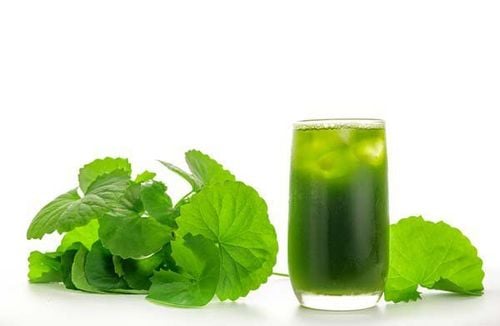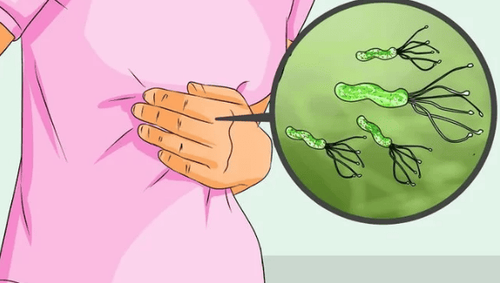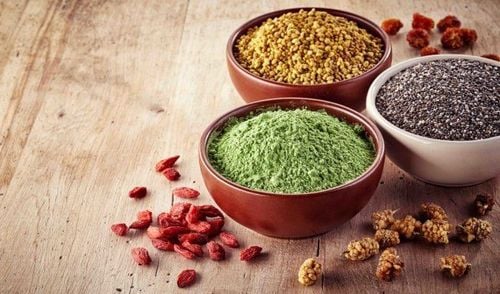This is an automatically translated article.
All foods, if handled properly, are safe for health. Safe food control is a form of proper food storage that helps prevent foodborne illnesses. Most poisonings won't happen when you follow the instructions properly.
1. Steps to control food safety
1.1 Attention to hygiene Disease-causing germs can live in many places around the kitchen, including food, hands, utensils and cutting boards. You need to wash your hands properly, at the right time. Wash the surface of the utensils after each use, regularly wash the wipes with hot water and soap, dry in the hot sun. Wash fruits and vegetables separately from meat, fish, eggs...
1.2. Separate to prevent cross-contamination Use separate cutting boards and dishes for different raw and cooked foods. Sort each type separately, even if you go to the supermarket, keep them in separate bags, store food in the refrigerator with each separate area
1.3. Cook at the right temperature Food is safely cooked when the internal temperature is enough to kill germs that can make you sick. Use a food thermometer to check if a dish is cooked by placing the food thermometer in the thickest part of the food, making sure not to touch the bones, fat or intestines, and refer to the cooking temperature chart minimum to know if the food has reached a safe cooking temperature.
1.4. Refrigerate and freeze food properly Food poisoning bacteria multiply fastest at a temperature range of 5 - 60oC. You should never leave perishable food in the refrigerator for more than 2 hours. Leftovers should be put in a clean dry container with a lid and refrigerated
Freezing doesn't kill bacteria, but it does help keep your food fresh until you cook it. Find out when food should be thrown away by looking at storage temperatures in refrigerators and freezers. Make sure you throw the food out before harmful bacteria grow.
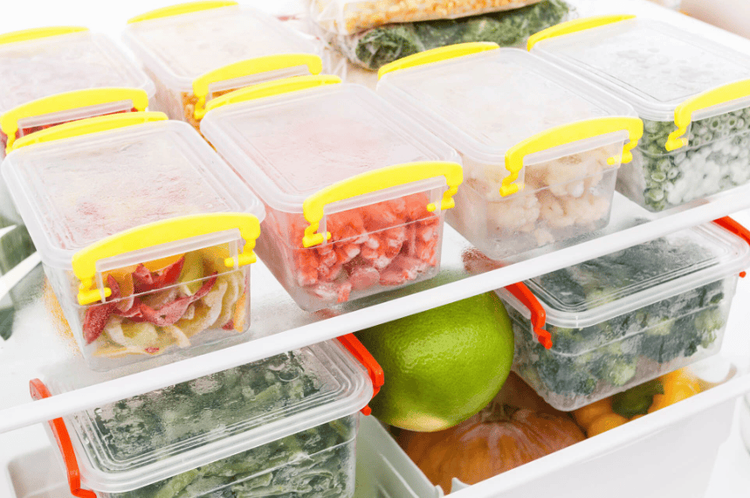
Thức ăn thừa nên được cho vào hộp khô sạch có nắp đậy và bảo quản lạnh
2. Tips to check for expired food and discard with each specific food
Visual inspection and smell is a safety measure to know if food has expired or not. But not all germs make food smell or taste bad. It's best to label and date food in the fridge and freezer so you know how long you've kept it.
Here's a tip for testing with specific product types
2.1. Mayonnaise Apply to any sauce or salad with mayonnaise. Throw it away if you have left it outside for more than 8h with a temperature higher than 10oC or have expired
2.2. Butter Heat, light and air will make swimming rancid, have a sour smell and taste bad. Butter should only be kept in the refrigerator for a maximum of 2 weeks. You can freeze swimming for up to 9 months if well wrapped in plastic.
2.3. Milk Bacteria grow quickly in milk, so throw it out if it smells bad or tastes sour. Milk will keep in the refrigerator for 2 weeks or longer until the expiration date. You can freeze milk for up to 3 months, but it will lose its smooth texture.
2.4. Cheese Hard cheeses like Cheddar can keep for a long time. You should remove them if they start to get moldy. If the cheese has a small to medium texture like Mozzarella or Muenster, they can keep for months. Cream cheese can keep for 2 to 3 weeks, but soft cheeses like cottage cheese and ricotta only last about 10 days.

Loại phô mai cứng có thể giữ được lâu và nên bỏ khi chúng có dấu hiệu mốc
2.5. Cooked meat Keep cooked chicken or beef in the refrigerator and use within 5 days. Ham can be used for up to 2 weeks. But it's important to keep in mind when handling any meat: Wash your hands with soap and hot water after handling raw meat or fish or with any food that's been touched. Use different cutting boards and utensils for other foods.
2.6. Uncooked beef The best time to store beef is 3 - 5 days in the refrigerator. If they are vacuum sealed, the storage time will be a little longer. Frozen whole pieces of beef can be kept for several months, although the texture and flavor may not be the same.
2.7. Fresh ground beef When storing food in the refrigerator, beef tends to turn slightly brown. It is a completely normal phenomenon and does not affect the quality of the meat. But the storage time will only be 1-2 days, because any bacteria on the surface of the meat will get mixed in when grinding. If kept in the freezer, it can be kept for 3-4 months.
2.8. Pork Fresh quality cutlets, steaks or roasts that are pink and firm. They will keep for 3 to 5 days in the refrigerator and longer if vacuum sealed. It will keep well in the freezer for about 6 months.
2.9. Uncooked Chicken Whole, whole pieces, boneless, best used immediately or frozen within 2 days. If you are freezing, thaw in the refrigerator for a day or so. You can safely refreeze if not using, but that can change the taste and texture.
Freezing time per portion
Whole chicken : 12 months Portions : 09 months Ground chicken : 3 - 4 months Offal: 3 - 4 months
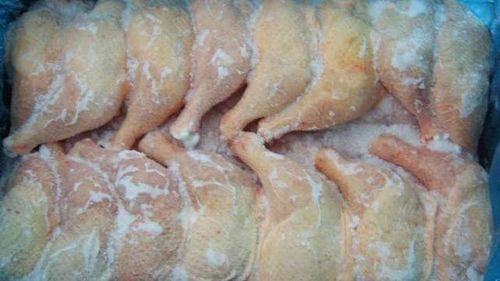
Thịt gà chưa nấu cần được bảo quản đông lạnh theo nhiệt độ phù hợp
2.10. Ham Sausages will last for about a week in the refrigerator once you open, 2 weeks unopened. Smoked meats last 3 to 5 days after opening, 2 weeks unopened. Freezing any of these keeps them safe from bacteria, but the quality starts to decline after 1 or 2 months.
2.11. Eggs Will keep in the refrigerator for 3 - 5 weeks if they are uncooked and in the shell. Eggs don't freeze completely, whether raw or cooked, but you can beat the yolks and whites together and then put the covered liquid in the freezer. Egg dishes, like casseroles, pies, and quick cakes, should keep for 3 to 5 days in the refrigerator or a month or two in the freezer.
2.12. Fish Store fish foods in the freezer compartment of the refrigerator in foil or plastic containers for 2 days. When fresh, whole fish have clear and round eyes, not flattened or opaque. Skin is shiny and soft to the touch with no milky white slime. The tenderloin should smell fresh, light, and not brown or dry at the edges. Discard those that smell, look lifeless and mushy.
2.13. Shellfish Shellfish, which can transmit serious diseases. Ideally, you should buy shrimp, scallops or clams, on the day that you want to use them. If they are still alive, they will react when you touch them. Immediately remove those that have opened their mouths, smelled, cracked shells...
2.14. Vegetables You can use fruits and vegetables if they are bruised or discolored. Wash all produce just before you eat, and if you want to dry them, be sure to use a clean towel. Store in the refrigerator, especially if prepackaged. Avoid storing fruit near raw meat, poultry or seafood.
Safe food is food that is properly stored and prepared. Each type of food and drink will have different preservation methods, so you should pay attention so that the food does not lose its nutritional value and still ensure a nutritious meal for the family.
Please dial HOTLINE for more information or register for an appointment HERE. Download MyVinmec app to make appointments faster and to manage your bookings easily.
Reference source: webmd.com - foodsafety.gov




